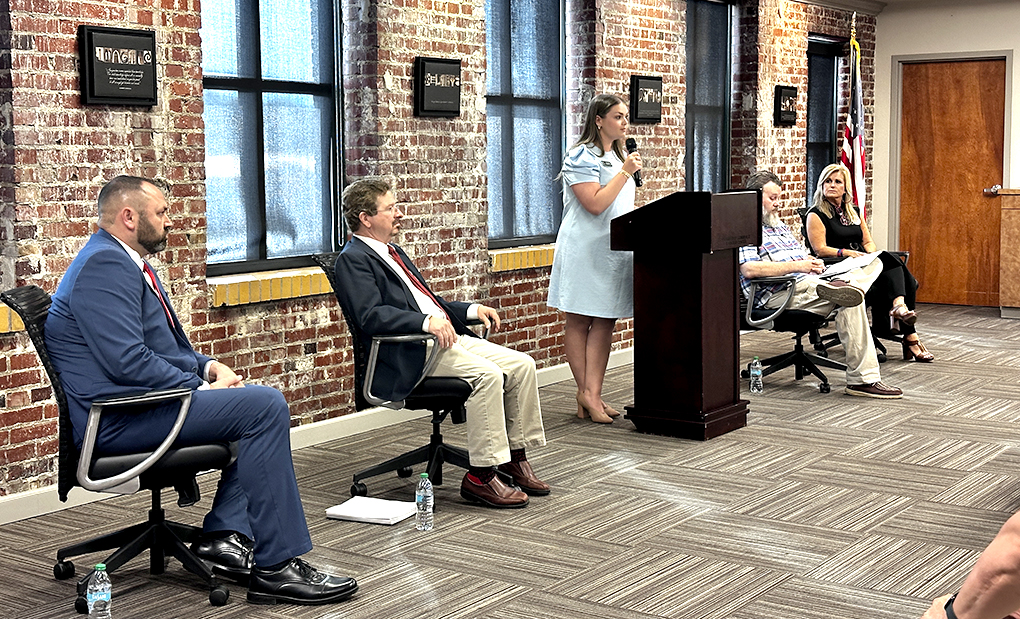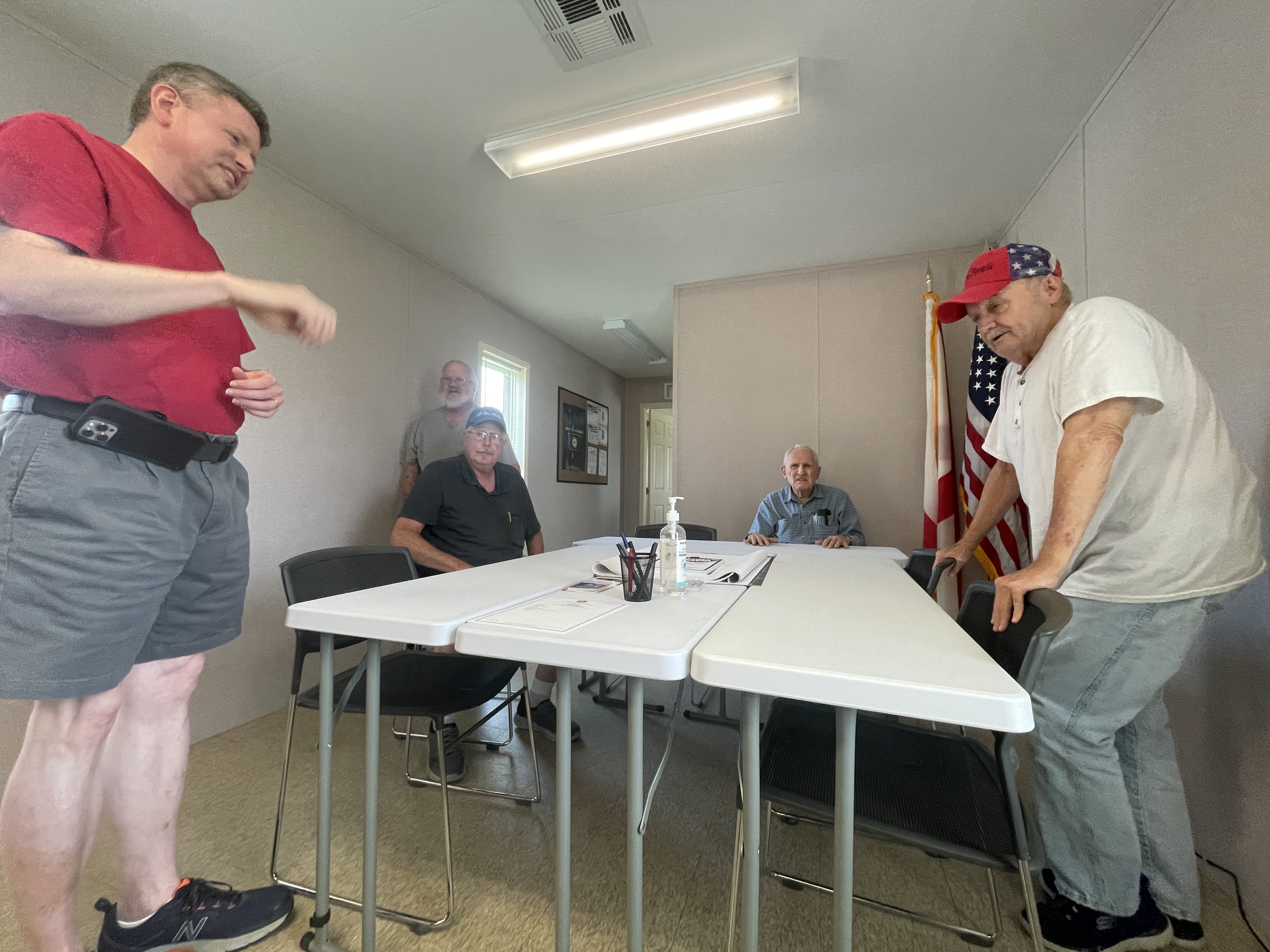Tornado recovery: Only memories
Published 7:00 pm Thursday, August 18, 2011
It seems like everyone has a tree story to tell. It may be memories of spending lazy summer afternoons on a tire swing. It could be battle scars won after climbing, or falling from, a tree. Trees hold memories of family picnics and innumerable family photos.
Children stage epic battles with fallen pinecones and acorns.
Perhaps it’s just the sound of a soft rustle in a gentle breeze that helps put you to sleep on a crisp fall night.
However grand or seemingly insignificant, trees play an important part in our psyche. They provide beauty to our homes and neighborhoods. Their functionality in providing shade is unparalleled.
Healthy trees reduce air and noise pollution. They are habitats for wildlife. They enhance property values and contribute to community image, pride and quality of life.
One of the longer-lasting effects of the April 27 tornadoes is of the damaged and lost trees in area communities. Many of those decades-old trees will take generations to replace. Countless trees have been removed, stumps hauled away, leaving bare patches where graceful elegance once stood. Many more trees withstood the tornado’s fury, but have been left battered and scarred.
Tammy Griffith of Cullman has mourned the lost trees.
“We live across from St. John’s church,” Griffith said. “We lost 10 trees just in our yard alone. It’s so sad to have all those trees gone. Without our trees, Cullman feels like a ghost town.”
Griffith said people used to stop in her yard to eat lunch under her shade trees or to take pictures. “It was so relaxing,” she said.
The Griffiths had one tree in particular that was special to them. “I don’t remember what kind it was exactly,” she said. “But it was imported, and the leaves grew upside down. It was so unique and so beautiful. But it’s not just my tree that was special. One of my neighbors had a tree that her kids would climb. The always took pictures of them in that tree. There are lots of people who are missing things like that now.”
The communities of Cullman County have lost hundreds and hundreds of trees, but their resiliency is showing as people decide how, not if, they will replant.
The city of Cullman had more than 300 trees destroyed or damaged from the tornado.
“Those are just the trees on city property and rights of way,” said city arborist Darrell Johns. “There are lots more down on private property.”
Johns said the city has been working to remove the damaged trees and does have a plan in place for replacing trees.
“We have to get everything cleaned up first,” Johns said. “We’ll start with avenues first and then streets. We’ll replant trees where we can.”
Due to power lines and other utilities, Johns said, the city may not be able replace tree for tree.
“In those cases, we’ll be looking at crape myrtles and smaller trees,” he said. “We do have an outline for replacing trees. The tree commission will be making recommendations. It will be an on-going process.”
Replacement trees will start going in this fall and into the spring.
Johns recommended checking with the Alabama Cooperative Extension office for residents who are interested in replacing trees.
“They have a lot of good information about what species are good, planting instructions and what size trees are good for different areas,” he said. “They are a good resource for our area.”
The tree loss should not have any effect on Cullman’s Tree City USA standing. To qualify as a Tree City USA community, a town or city must meet four standards established by The Arbor Day Foundation and the National Association of State Foresters: have a tree board or department, have a tree care ordinance, have a community forestry program with an annual budget of at least $2 per capita and have an Arbor Day Observance and Proclamation.
Sponsored by the Arbor Day Foundation with the USDA Forest Service and the National Association of State Foresters, the Tree City USA program provides direction, technical assistance, public attention and national recognition for urban and community forestry program.
Cullman has been a Tree City USA for 23 years.
Griffith has already planted two replacement trees. “I want to challenge everyone to give up a birthday present and plant a tree instead,” she said. “We planted two on my birthday. We’re trying to do this on everyone’s birthday.”
So far, they’ve planted a pear and an apple tree and will likely plant a maple tree next.
While it breaks her heart to have lost the trees to begin with, replanting has been a good experience for her family, Griffith said.
“My son asked for pictures of our house before the tornado, because he doesn’t remember what the trees looked like,” she said. “There will be some children who will never know what Cullman looked like before the tree loss. But this has been a really good thing for my kids. I grew up in the country with a watermelon patch and strawberry patches. My kids have grown up in the city. It was good for my kids to realize there is more to planting and growing. It was a good experience for them to learn how to do that.”
Cullman High School student Rob Huddleston is doing his Eagle Scout project by planting replacement trees at East Elementary.
“I haven’t worked out all the details yet,” Huddleston said. “I knew I wanted to do my Eagle project at East, but I hadn’t really decided exactly what I wanted to do.”
After the tornado, Huddleston’s mother actually suggested the idea of planting trees.
“I liked the idea and met with Mr. Wiggins, the principal,” he said. “He really liked the idea. He spoke to (superintendent) Dr. Harris. She was thrilled at the idea.”
Huddleston will work with the school to determine what type of trees will work best for the campus. The type of tree and the amount of funding Huddleston receives will determine how many trees he plants.
“I would like to meet with the agriculture department at Wallace State and get some professional opinions about what sorts of trees would do well,” he said. “I still have to get official approval from my end (Boy Scouts). After the tornado and the devastation we’ve experienced here, I knew getting approval for this particular project would not be a problem.”
The Arbor Day Foundation has joined forces with the Alabama Forestry Commission to bring trees to families in tornado-damaged areas. The Alabama Tree Recovery Campaign will help restore families’ homes and neighborhoods. For every dollar donated to the campaign, the Arbor Day Foundation will deliver a tree to an Alabama resident affected by the April tornadoes. The Arbor Day Foundation will deliver native trees at the best time for planting, most likely in the fall.
“The Alabama Tree Recovery Campaign is an important effort to distribute trees to Alabamians who had homes destroyed in the April tornado outbreak,” Gov. Robert Bentley said. “This campaign will help restore our communities, appreciative to the Alabama Forestry Commission and Arbor Day Foundation for coming together on this project.”
“The trees lost in the recent tornado outbreak provided millions of dollars in environmental, economic and social benefits,” said Linda Casey, Alabama State Forester. “This campaign can go a long way toward putting our communities and surrounding areas on the path to recovery.”
More information about the initiative can be found at www.arborday.org.
Alabama Cooperative Extension agent Tony Glover has been providing information to residents interested in replacing trees.
“I have heard a lot of talk about keeping the old charm of downtown while introducing some improvements both to buildings, infrastructure and aesthetics,” Glover said. “I think this is a good idea. My hope is that people will likewise spend a little time thinking about the ‘green’ infrastructure of our commercial and residential landscapes.”
Residents who’ve lost trees have decisions to make about whether they want to replant and how to do so.
“If you lost trees and are trying to decide what to do, let me encourage you to step back and spend some time researching and talking to knowledgeable gardeners, nursery owners, landscapers or someone from the Extension office,” Glover said. “You really should wait until October or November to plant trees and shrubs. Your chance of success goes up dramatically compared to summer planting for obvious reasons. The stress level on the trees is much less in cooler times of the year. The need for water is reduced, and inadequate watering is the biggest reason trees die when planted in the hot times of the year. Spend the time between now and then preparing the soil and choosing and locating desirable tree species. You can re-plant in the same area where the old tree was located, but you may not be able to plant in the same hole without removing the old stump and replacing the removed soil.”
Glover recommends testing your soil and matching tree species to the pH of the soil.
“The Extension office can provide soil testing information and help you interpret the results,” he said.
Many shade trees species take many years to reach full growth. “But if the right species is chosen for the site, and you do a good job planting them and provide them with adequate water until they are well established, you will be amazed how fast they will grow,” Glover said. “We plant trees for generations to come. We owe it to those who will come after us to make good choices.”
Glover encourages residents to keep utilities in mind when selecting trees. Call 811 before digging to identify underground utilities.
“There are many great small to medium sized tree species that will not cause a later problem for utility lines,” he said.
For suggestions on which trees would work best in your situation, call the Extension office at 256-737-9387.





